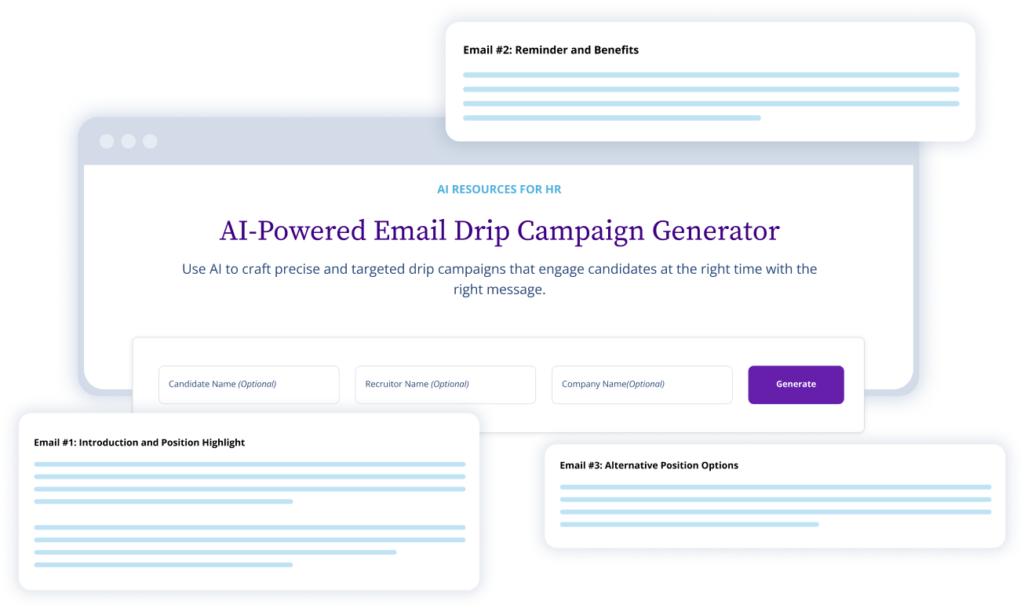We’ve learned to expect the unexpected when it comes to the state of the labor market over the past few years. This year is no exception — talent acquisition trends in 2026 are set to bring both opportunities and complexities for recruiters. To stay ahead, your HR team needs to understand where the industry is heading and adapt accordingly.
Let’s dig into six key talent acquisition trends and take a closer look at how recruiting and hiring processes are evolving. We’ll also share advice on how to proactively adjust your strategies in response.
#1: Skill-Based Hiring & Upskilling
The skills gap, estimated to leave the U.S. short of more than five million skilled workers by 2032, remains a pressing concern for talent acquisition teams. As a result, hiring for specific skills is not so much a trend as a new core talent strategy. Along with strategic employee skill development, it’s a requirement if your business wants to achieve its goals — let alone set bigger ones.
Skill-based hiring shifts your recruiters’ main focus from traditional credentials, like degrees or years of work experience, to candidates’ actual abilities. This approach widens your talent pool, attracting job seekers who are the perfect fit but might skip over roles with rigid requirements. The results speak for themselves: 90% of companies reported fewer hiring mistakes after adopting this method, and 94% say their skills-based hires outperform those hired based on traditional qualifications.
In addition, upskilling and reskilling initiatives — often part of a learning and development (L&D) program — are increasingly important for both attracting and retaining top talent. Highlight opportunities for growth and advancement on your career site, in job descriptions, and during interviews. Upskilling is a solid recruitment tool and an excellent way to drive long-term retention, especially of your most driven, high-performing employees.
#2: AI Hiring & Hiring AI
The use of recruiting automation and artificial intelligence (AI) is ubiquitous, with 88% of employers already using it for initial screening. 43% of HR teams also noted that one of their top priorities this year is investing in technology to streamline workflows — one of AI’s biggest strengths. But in 2026, recruiters will face another AI challenge: AI agents.
More than half of HR teams say they expect to add an AI agent to their team next year. If your team is considering building an agent instead of hiring a new team member, you’ll have important questions to consider:
- How do you onboard AI agents?
- How do managers coordinate tasks between humans and AI?
- Who trains and monitors the agent?
- Who is responsible when the agent gets something wrong?
Recruiters still need to understand when using technology makes work faster and more efficient — and when it just makes things weird. 75% of people say they’re comfortable working alongside an AI agent, but only 30% would want those agents as managers.
#3: Internal Mobility Protects Pipeline
AI is saving us lots of time when it comes to our daily work, but it’s also a cause for concern for employees at risk of being replaced by the technology. 43% of companies plan to replace some roles with AI, with operational and entry-level staff at the highest risk. But replacing too many employees with technology can lead to a pipeline crisis — cutting costs initially, but causing more harm than good in the long run.
That’s because every organization needs strong leaders, and many of the strongest leaders have worked their way up. If your entry-level employees are all AI, you’ll have to hire from outside the company. Those managers are expensive hires who lack the institutional knowledge of a longtime employee. Protect internal mobility and entry-level positions that nurture future leaders to avoid a pipeline crisis down the road.
#4: Balancing AI & Human Skills
AI is certainly dominating the conversation in the recruiting process and across the world of work as we learn how to use it best. While we all want to attract top talent with stellar AI knowledge — CEOs rank it as their most-wanted skill in 2026 — it’s important that other critical skills aren’t overlooked. Nearly 75% of talent acquisition leaders say critical thinking is the top skill they’re looking for, with AI ranking fifth.
That’s because human skills (also called soft skills or professional skills) are much harder to teach than those needed for AI. Employees with critical thinking and problem-solving skills are better equipped to question AI output, rather than assuming that it’s accurate and reliable. Plus, those employees can handle not just today’s AI conundrums, but future tech challenges, too.
#5: Employer Brand & RTO
Return-to-office (RTO) mandates have been ramping up: 55% of Fortune 500 companies now require employees to be in-office five days a week, compared to just 5% in 2021. As we enter the new year, even more companies are jumping on RTO — NBCUniversal and Microsoft are among those requiring employees to RTO three to four days a week. Unfortunately, 52% of TA leaders say RTO makes hiring harder.
If your organization is doing away with 100% remote work in favor of hybrid or full-time RTO, your employer brand will be your biggest hiring ally. A strong employer brand showcases your employee value proposition (EVP) — in other words, the reasons why a job seeker would want to work for your company. Understanding these elements of your recruiting strategy helps you attract candidates who are the right fit not only for your open roles, but also for company culture.
To stand out, focus on communicating the benefits of your workplace experience, whether it’s opportunities for collaboration, career growth, or access to on-site perks. Highlighting these elements can help you attract candidates who align with your culture and thrive in your work environment.
#6: AI-Powered HR Analytics
Data-driven recruitment is the defining trait of a modern talent acquisition team. It enables your team to make smarter, more strategic decisions at every stage of the recruiting process. With AI-powered analytics and reporting software, your team can pinpoint hiring bottlenecks, optimize the candidate experience, and keep track of retention for new hires and tenured employees. Best of all, your AI analytics agent can help you gain actionable insights from that data.
For example, imagine one of your job posts isn’t bringing in many candidates. You ask your AI agent where candidates are dropping off or how many candidates a new job board website brought in. From there, you learn that few applicants complete more than three pages of your six-page application and that a new job board only brought in a handful of prospective candidates. The software can even show you time-to-hire trends so you can reduce delays and remain competitive as an employer.
Thanks to these data-driven insights, you can address issues immediately — reduce the application to three pages, pivot to a new job board, or give just three interviews instead of four to help speed up hiring. When you can fine-tune strategies in real time, you can prevent small issues from blowing up into big problems. You also gain a valuable understanding of long-term trends, like which roles are consistently hard to fill and whether retention improved after extending the onboarding process from two weeks to 90 days.
Competition for top candidates is only getting tougher, and insights from HR analytics are crucial to stay ahead and succeed in 2026 and beyond.
Equip Recruiters With Top Talent Acquisition Tools in 2026
You don’t want to just survive these shifts in the hiring landscape — you want to thrive. Give your HR team the tools to stay competitive as they navigate these new talent acquisition trends. Take action now to ensure your hiring strategy is ready to tackle whatever comes your way.
Embrace the future of recruitment and give your team the tools to succeed with AI-powered Talent Acquisition from ClearCompany. Sign up for a demo today.


.png)
